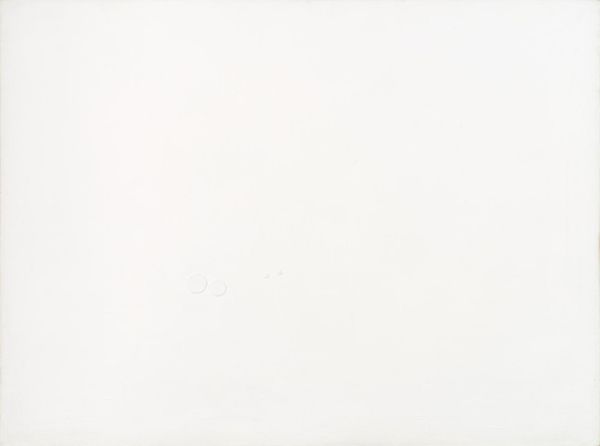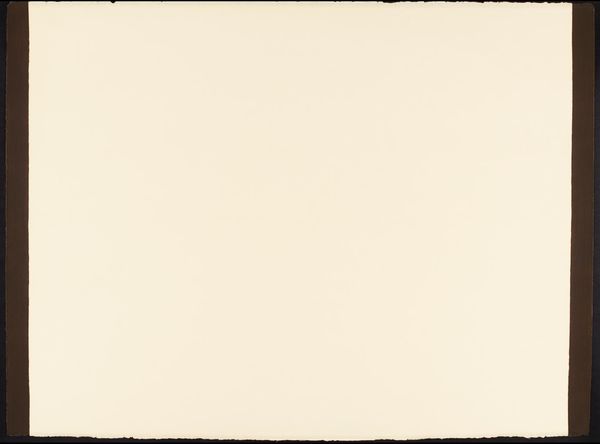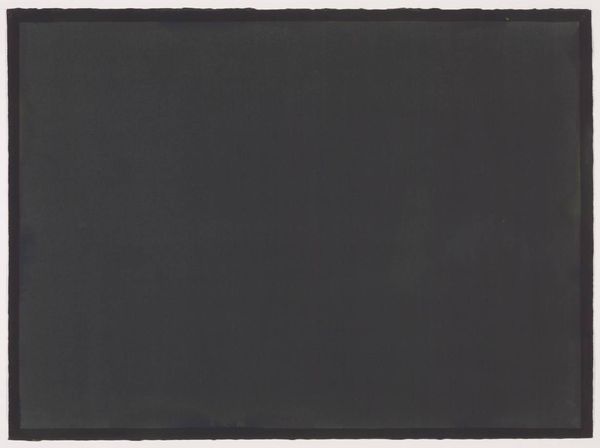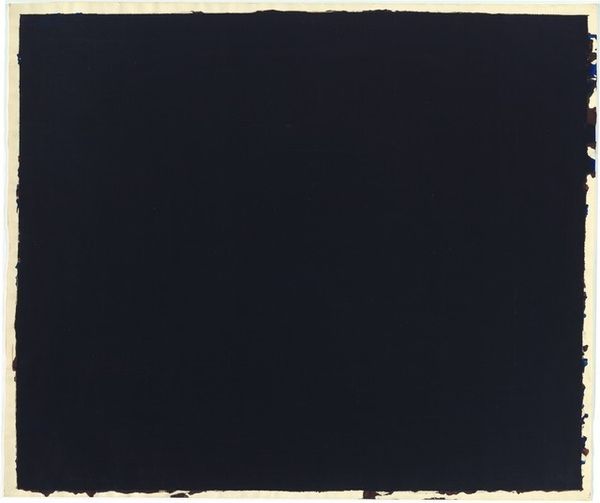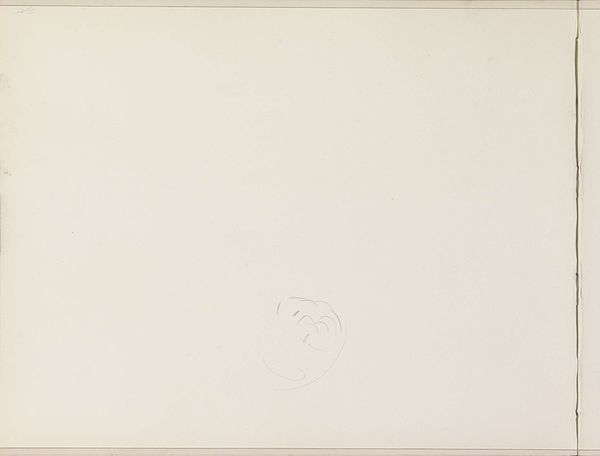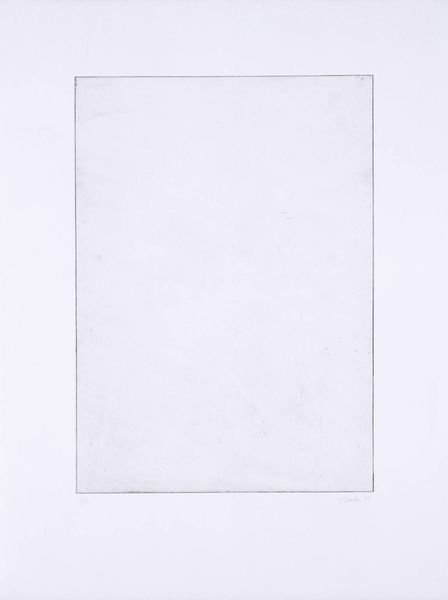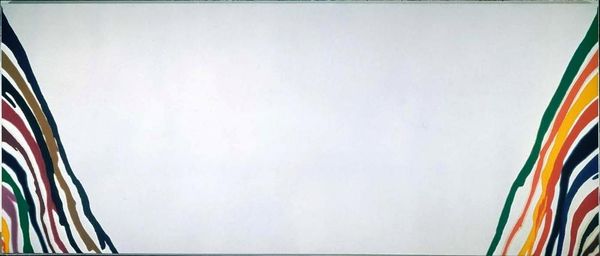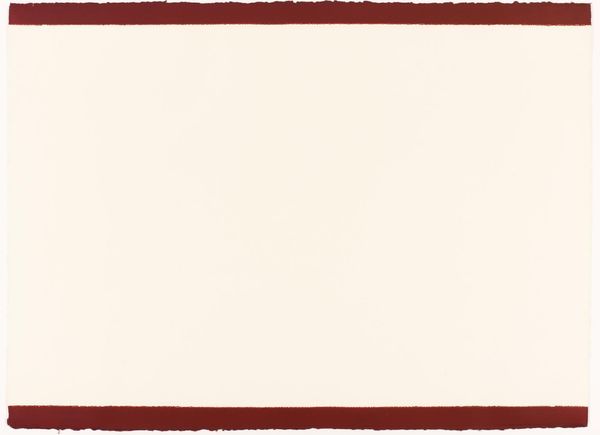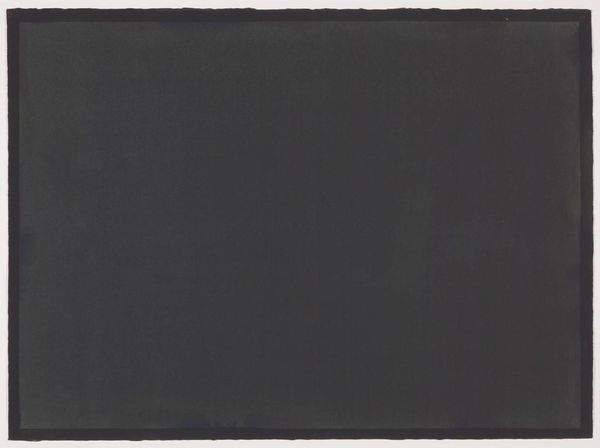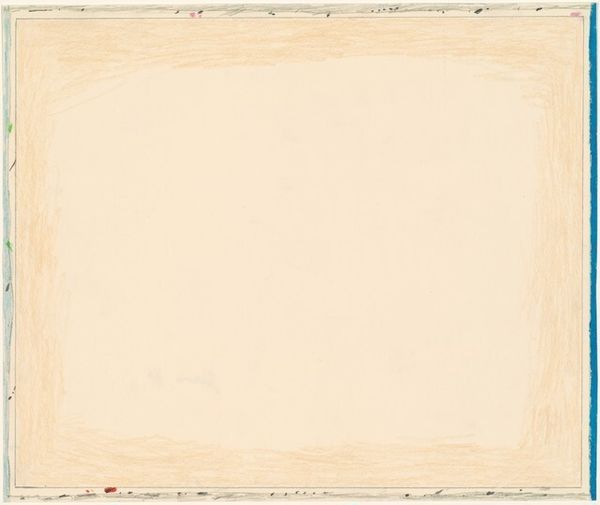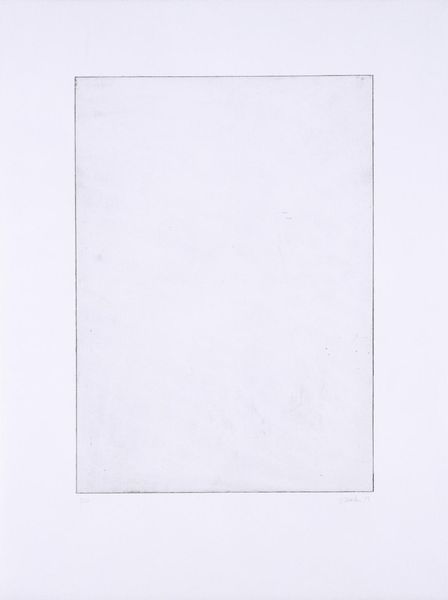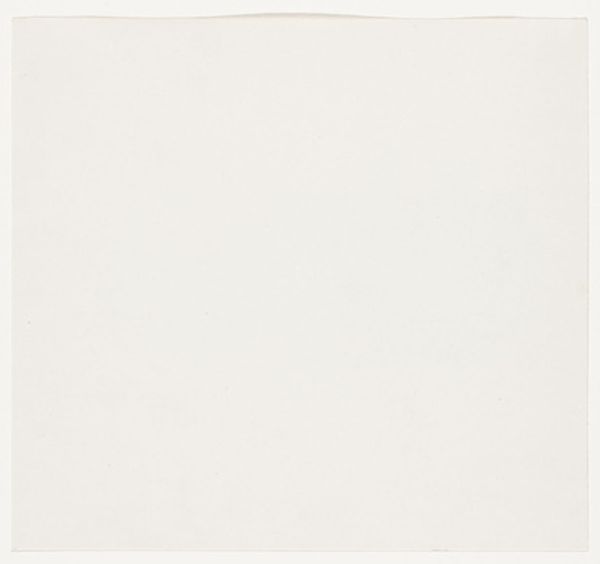
drawing, paper, graphite
#
drawing
#
conceptual-art
#
paper
#
geometric
#
abstraction
#
line
#
graphite
#
modernism
Copyright: Bob Law,Fair Use
Curator: Here we have Bob Law’s “Drawing 24.4.60”, made with graphite on paper in 1960. It’s deceptively simple. Editor: My initial reaction is… emptiness. A pale, almost clinical expanse contained by a wavering dark line. It feels more like the edge of something than an object in itself. Curator: Precisely! Law was working within a modernist context, questioning the very definition of art and representation. This piece embodies a move away from traditional composition and subject matter. The framing edge, the drawing's sole element, draws attention to the void it encloses, creating a contemplative space. Editor: But that edge isn't pristine. It's fractured, imperfect. The graphite appears almost hesitant in places, thickest near the corners. It introduces an element of chance, a human element within this austere structure. This tension between precision and imperfection is captivating. It reveals an attempt to question semiotic closures that would signify meaning through perfectly readable images. Curator: Exactly. Think about the artistic climate in 1960. Conceptual art was challenging established norms, moving art from object to idea. Law's work participated in a wider investigation of art's fundamental components. This 'void' engages with debates about minimalist aesthetics and what art’s role should be. It becomes less about the thing and more about the viewers engagement. Editor: In a way, the apparent simplicity amplifies its power. There’s an insistence on material presence – paper and graphite – creating this sense of reduction, making us keenly aware of how we attribute meaning. The texture of the paper becomes very present through the frame and the bare central void. Curator: Absolutely. Its very sparseness invites individual contemplation and reflects a key turn in artistic practice and its reception. Its effect comes from the social space of discourse. Editor: Considering these aspects of the work makes what could have been a disappointing visual experience so conceptually compelling. The sparseness transforms from emptiness into a point of radical aesthetic intervention. Curator: Indeed. The artwork shows us how radical a seemingly simple conceptual work can impact a cultural setting.
Comments
No comments
Be the first to comment and join the conversation on the ultimate creative platform.

